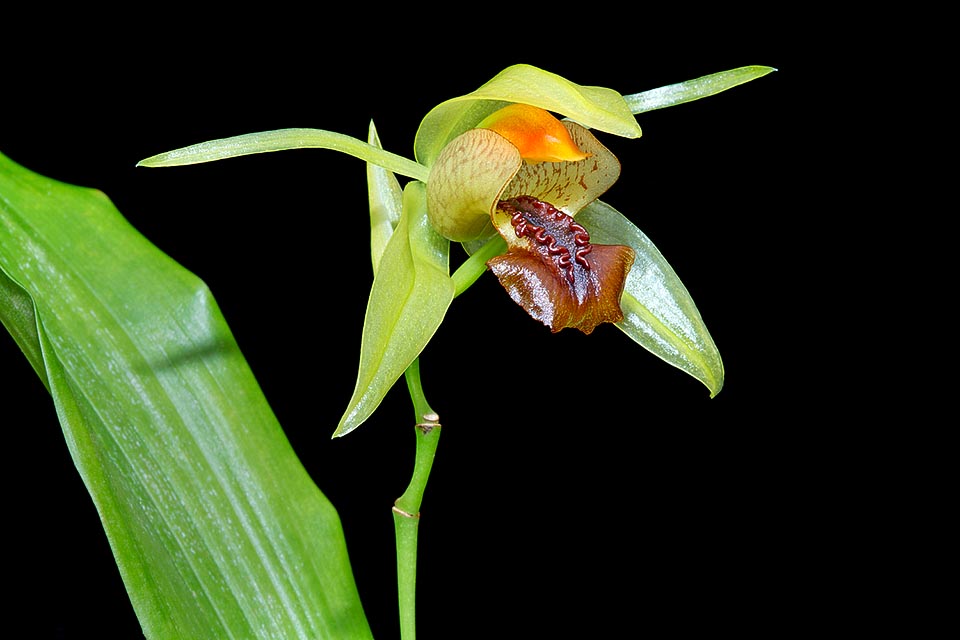Family : Orchidaceae

Text © Pietro Puccio

English translation by Mario Beltramini
The species is endemic to the island of Tioman, located off the eastern coast of Peninsular Malaysia, where it grows on the trees of the humid forest or on rocks covered by moss, between the 600 and the 1000 m of altitude.
The name is the combination of the Greek adjective “κοῖλος” (koilos) = hollow and “γυνή” (gyne) = female, with reference to the concave stigma; the Latin specific name refers to its place of origin.
The Coelogyne tiomanensis M.R.Hend. (1930) is an epiphytic or lithophytic species with creeping rhizome, of 0,5-0,7 cm of diameter, and ovoidal pseudobulbs, spaced of about 3 cm, 2-5 cm long, provided at the apex of a single lanceolate leaf, on a 3-5 cm long petiole, with acuminate apex and prominent veins, 15-30 cm long and 3,5-6,5 cm broad.
Erect inflorescence, on a 10-15 cm long scape, developping in the same time as the leaf, with 2-10 flowers, of about 7 cm of diameter, opening gradually spaced of 1-1,5 cm on the zigzagging rachis, odourless. Sepals and petal of pale greenish to pale pink colour and whitish labellum with brown veins in the lateral lobes and dark brown spot in the central lobe. Almost similar oblong-lanceolate sepals with acute apex, 3-4 cm long and 0,6-1,2 cm broad, linear petals with acute apex, 3,2-4 cm long and about 2 mm broad, trilobed labellum, 2,8-3,5 cm long and 1,5-2 cm broad, with oblong lateral lobes with rounded apex, erect at the sides of the column, and ovate central lobe with curved margin run at the base, for about half of its length, by two wavy crests, and 2-2,5 cm long and about 1 cm broad column.

Epiphyte or lithophyte of Tioman Island, off the eastern coast of Peninsular Malaysia, the Coelogyne tiomanensis has a creeping rhizome with 2-5 cm ovoidal pseudobulbs, with one 15-30 cm leaf and 2-10 7 cm flowers gradually opening. Little known, should deserve a better horticultural diffusion © Giuseppe Mazza
It can be mounted on trunks, pieces of bark or rafts of roots arborescent ferns roots covered by sphagnum or cultivated in pots or baskets with draining and aerated compost based on medium sliced bark fragments and sphagnum.
Repottings and possible divisions, with each section provided of a least 3-4 pseudobulbs, are to be done, when strictly necessary, at the vegetative restart.
The species is reported in the appendix II of the CITES (species whose trade is internationally ruled).
→ For general notions about ORCHIDACEAE please click here.
